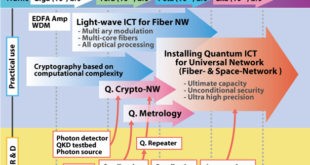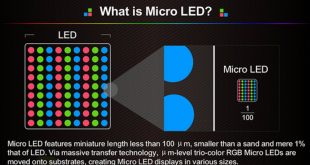Introduction
In the fascinating world of materials science, the ability to analyze and understand the composition of different substances is of paramount importance. Scientists and researchers have long sought advanced techniques to unlock the secrets of materials swiftly and accurately. Enter Laser-Induced Breakdown Spectroscopy (LIBS), a cutting-edge analytical tool that has revolutionized the field of materials analysis. In this article, we delve into the workings of LIBS and explore how it has transformed our understanding of various materials, from ancient artifacts to cutting-edge technologies.
For deeper understanding of Laser technologies and applications in Material science please visit: Illuminating Innovation: Laser Applications in Materials Science
Understanding LIBS
Laser-Induced Breakdown Spectroscopy (LIBS) is a powerful analytical technique used to determine the elemental composition of materials. The process involves focusing a high-energy laser pulse onto the surface of a sample, which generates an intensely hot plasma plume through laser-induced ablation. As the plasma rapidly cools down, the atoms emit characteristic wavelengths of light, which are then analyzed using spectroscopy to identify the elements present in the material.
The LIBS Process
- Laser Ablation: A short, intense laser pulse is directed at the surface of the material, causing a small amount of the material to vaporize and form a plasma.
- Plasma Formation: The laser ablation produces a high-temperature plasma plume, which contains excited ions and atoms of the material.
- Emission of Light: As the plasma cools, the excited ions and atoms return to their ground state, releasing energy in the form of light of specific wavelengths.
- Spectral Analysis: A spectrometer collects and analyzes the emitted light, identifying the characteristic spectral lines of elements present in the sample.
Advantages of LIBS
One advantage of LIBS is that it can be used to analyze materials in their natural state. For example, LIBS can be used to analyze the composition of rocks and minerals without requiring any sample preparation. This makes it a useful tool for geologists and other scientists who are interested in understanding the composition of materials in their natural state.
- Non-Destructive: LIBS is a non-destructive technique, meaning it does not require extensive sample preparation and leaves the material intact after analysis.
- Rapid Analysis: LIBS provides real-time analysis, making it ideal for applications where quick results are crucial. The laser pulse used to create the plasma is very short, so it does not cause any significant damage to the sample. This makes LIBS useful for analyzing materials that are difficult or impossible to replace, such as archaeological artifacts or museum specimens.
- Minimal Sample Size: Another advantage of LIBS is that it is a highly sensitive technique. It can detect trace elements in a sample, even at concentrations as low as parts per million. This makes it useful for applications where accurate detection of trace elements is important, such as in environmental monitoring or detecting impurities in industrial materials. Only small amounts of material are needed for analysis, which is particularly advantageous when working with precious or limited samples.
LIBS can also be used for quantitative analysis, allowing for the determination of the concentration of specific elements in a sample. This makes it useful for applications where accurate measurement of specific elements is important, such as in the analysis of environmental samples or in the detection of impurities in industrial materials.
There are some limitations to the LIBS technique, however. One limitation is that it is sensitive to the presence of certain elements, such as carbon and nitrogen, which can interfere with the analysis of other elements. Additionally, the depth of analysis is limited to the surface layer of the sample, so it may not provide a complete picture of the composition of the material being analyzed.
Despite these limitations, LIBS is a powerful tool for chemical analysis, with applications in a wide range of fields. It has the potential to revolutionize the way we analyze materials, and to provide valuable insights into the composition of everything from rocks and minerals to industrial materials and biological tissues.
Applications
The LIBS technique can be used in a variety of settings, from laboratory analysis to field applications. In laboratory settings, LIBS instruments can be used to analyze a variety of samples, including solids, liquids, and gases. LIBS can also be used in situ, allowing for rapid analysis of samples in the field.
In addition to its use in science and industry, LIBS is also used in medicine for applications such as tissue analysis and cancer diagnosis. Overall, LIBS is a powerful tool for chemical analysis, with applications in a wide range of fields.
- Archaeology and Cultural Heritage: LIBS has played a vital role in analyzing ancient artifacts and cultural heritage items without causing damage to the objects. By determining the elemental composition of archaeological finds, researchers can gain insights into historical production techniques, trade routes, and cultural interactions.
- Environmental Monitoring: LIBS is employed in environmental analysis to determine the presence of contaminants in soil, water, and air. It helps assess pollution levels and assists in making informed decisions regarding environmental conservation and remediation efforts.
- Material Characterization: In materials science and engineering, LIBS is utilized to analyze the composition of metals, alloys, ceramics, and polymers. This data aids in quality control, material identification, and understanding the properties of new materials.
- Space Exploration: LIBS has found applications in space missions, where it is used to analyze the composition of planetary surfaces. Remote LIBS instruments on rovers and landers have been deployed on Mars, for instance, to study the geology and chemistry of the planet’s surface.
- Industrial Applications: LIBS has proven invaluable in the industrial sector for analyzing metals during manufacturing processes, identifying contaminants in products, and ensuring product quality and safety.
NASA LIBS
NASA LIBS has been used extensively in several missions to Mars, including the Mars Science Laboratory (MSL) mission that landed the Curiosity rover on Mars in 2012. The Curiosity rover’s ChemCam instrument, which uses LIBS, has helped scientists identify rocks and soils on Mars that could potentially support microbial life.
The LIBS technique has also been used in other NASA missions, including the Mars 2020 mission that landed the Perseverance rover on Mars in February 2021. The Perseverance rover’s SuperCam instrument uses LIBS to analyze the composition of rocks and soils on Mars.
In addition to its use in planetary science, NASA LIBS has many other potential applications. It can be used for remote sensing, environmental monitoring, and even for the analysis of cultural heritage materials.
One advantage of the LIBS technique is its speed. It can analyze a sample in just a few seconds, making it useful for applications where rapid analysis is required. Another advantage is its ability to analyze samples without destroying them. This makes it useful for the analysis of precious or irreplaceable materials, such as artifacts in a museum collection.
However, there are also some limitations to the LIBS technique. It can only analyze the surface of a sample, so it may not provide a complete picture of its composition. It is also sensitive to the presence of certain elements, such as carbon and nitrogen, which can interfere with the analysis of other elements.
Despite these limitations, NASA LIBS has proven to be a powerful tool for analyzing the composition of rocks and soils on other planets, and it has the potential for many other applications in science and industry.
Conclusion
Laser-Induced Breakdown Spectroscopy (LIBS) has opened new frontiers in materials analysis and scientific research. This powerful technique enables scientists and researchers to unlock the secrets of various materials, offering valuable insights across disciplines ranging from archaeology and environmental monitoring to space exploration and industrial applications. As technology continues to advance, LIBS is poised to become even more versatile, making it an indispensable tool in the quest to understand and harness the properties of different materials for the betterment of society.
 International Defense Security & Technology Your trusted Source for News, Research and Analysis
International Defense Security & Technology Your trusted Source for News, Research and Analysis

